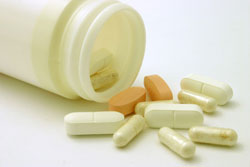Carotene diet supplement from natural sources
Carotene is an important pro-vitamin and it is stored in the liver where it is converted to vitamin A as and when needed. There are two main molecular forms and the beta isomer can act as an antioxidant to scavenge upon damaging free radicals. Most of the carotene on our shelves at present is produced chemically but there is a drive to find means of producing the vitamin by biological means. According to many researchers, this is a better alternative for incorporation into supplements. Partners in the FUNGAL CAROTENOIDS project researched the production of natural carotenoids using various fungal species, including Blakeslea trispora (B trispora). In particular, researchers from Antibioticos in Spain concentrated on the isolation of two B. trispora genes that were cloned and subsequently sequenced. The two sequences, carA and carB were expressed in other fungal species, notably, a Mucor species. Some Mucor strains showed the characteristic yellow colour of carotene suggesting its production and accumulation. Samples were subsequently analysed using high performance liquid chromatography (HPLC) to confirm this. Further research is expected to improve the yield of beta-carotene from the B. trispora sequences isolated. This can be achieved by alteration of the genes themselves or, alternatively their genetic environment by using other species for expression.







